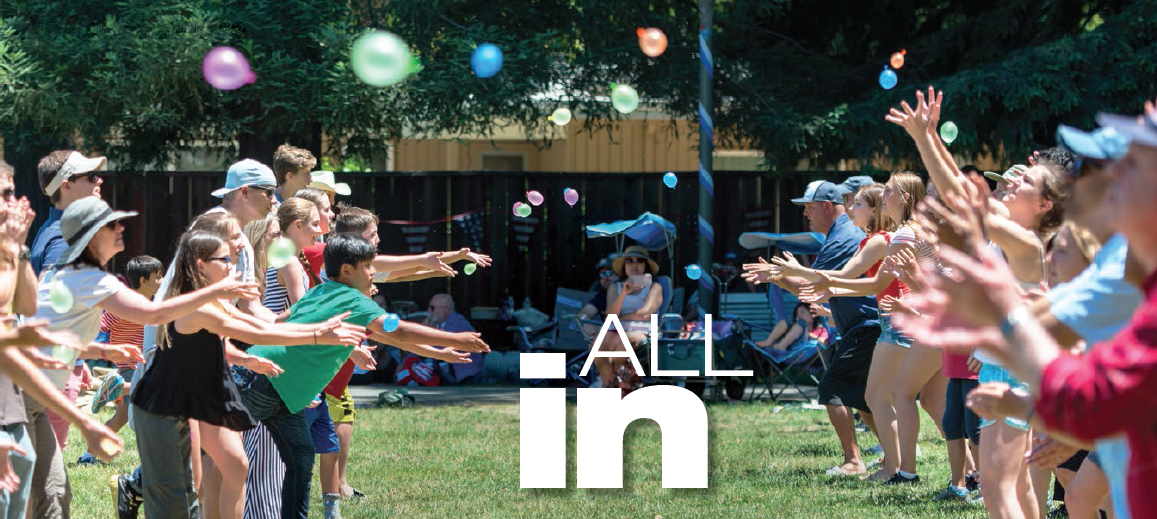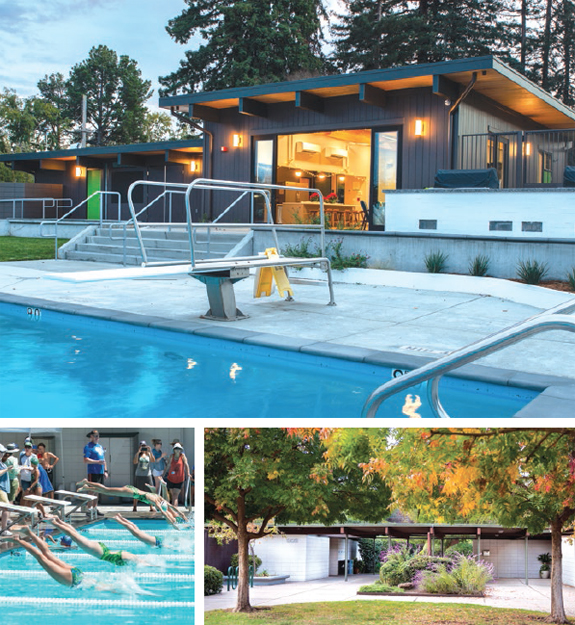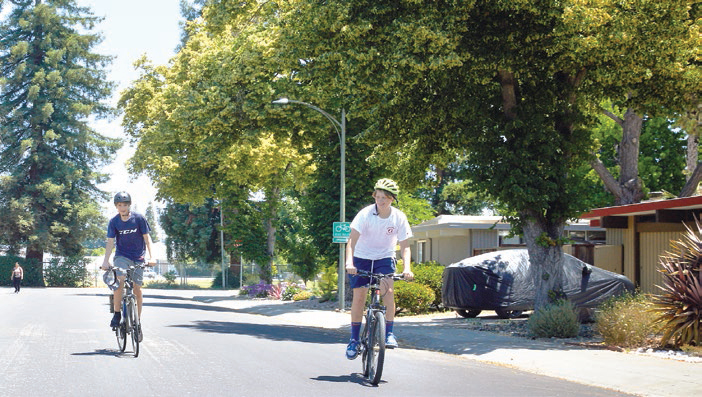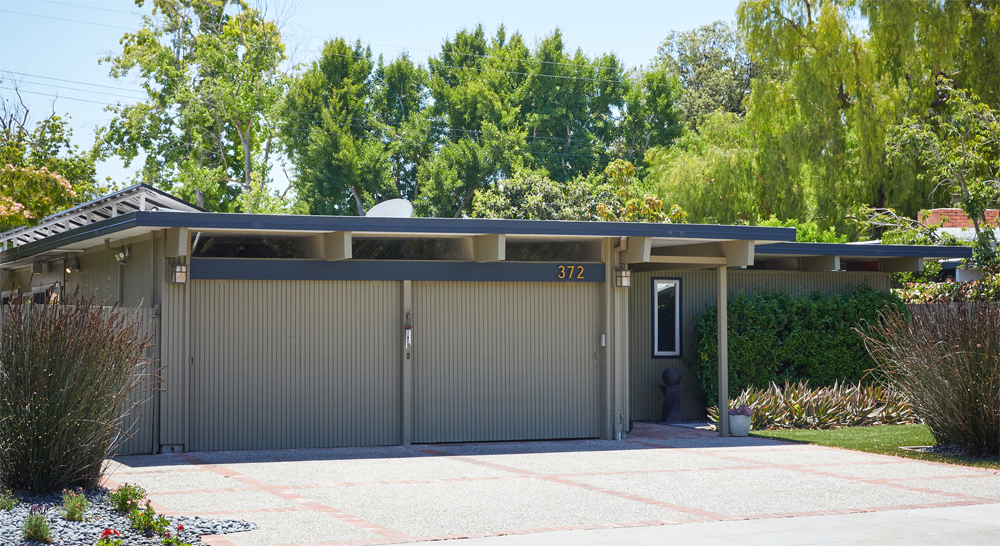All In
 |
|
|
Growing up in the 1970s among the Eichlers in Palo Alto's Greenmeadow, Barry Tao says, "I considered it the most boring place because it was so quiet."
To this day the roughly 280-home enclave, Barry's neighbor Sabine Nusser says, remains "a little town out of the '50s…in the middle of a city."
Joe Eichler's subdivision remains an entrancing place, its tree-lined, curving streets filled with houses that largely look much as they did when first built. In the center of the tract, geographically and spiritually, is a park and community center, with a swimming pool that hosts the young peoples' Marlins swim team and more.
"We are at the pool all the time," says Nick Nguyen, who runs an artificial intelligence startup with his wife and has lived here for nine years. "My five-year-old had a birthday party at the clubhouse, which is great because it's a great space for entertaining."
The pool is also central to the neighborhood's history, unifying a community after a dramatic birth that involved Greenmeadow residents battling over control of the pool and park with a man they otherwise admired—Joe Eichler.
 |
|
|
The neighborhood's history was acknowledged when Greenmeadow was named to the National Register of Historic Places in 2005.
The nomination to the Register focused, rightly, on the tract's birth, its architecture, its contribution to modern architecture and the growth of suburbia.
Not detailed, however, was how, over the years, neighbors banded together to form an association and keep it going when financial times were rough; to operate an effective architectural review committee; and to win protection from second-story additions, long before other Palo Alto neighborhoods woke to that danger.
The story of Greenmeadow's birth in 1954 is known to many neighbors, thanks to oral historical video interviews produced back in 1994, now posted to YouTube.
Neighbors who'd just bought homes in the Jones & Emmons-designed tract on the promise that they would come with "a community center swimming pool….playgrounds…nursery school," rose in rebellion when Joe announced plans to lease the pool and community center to outside operators, who would open them to the general public.
 |
|
|
To battle Eichler, activists in the neighborhood, which did not have a homeowners association, formed an association of a very different sort—a voluntary community association. They prepared to sue what their attorney, later Congressman, Pete McCloskey called "the Eichler Empire."
Eichler quickly agreed to sell the park, center, and pool to the new Greenmeadow Community Association. "They did a great job negotiating and got the whole thing for like $10,000," says Sean Giffen, who, like Barry Tao, grew up in the neighborhood and lives there again. "My take is, [Joe] was probably so sick of dealing with us that he just said, 'take it.'"
By acquiring a community asset, the association also acquired the obligation to care for it. "Having a pool presented a series of problems that needed to be solved," says Glenn Story, a computer scientist who's lived in Greenmeadow since 1978 and used to handle communications for the association. "So that required a board to do it."
What resulted is a sort of oddball creature, a hybrid between a pool association serving anyone who cares to join, and a community group representing the neighborhood on all sorts of issues.
It's not a homeowners association that requires dues from all homeowners, but an association that runs the pool and park, which are open not to all residents but only those who voluntarily join and pay dues.
 |
|
|
Most every family with kids in the neighborhood does join. And while the Marlins swim team is more about enjoyment than intense competition, any number of Marlins have gone on to competitive swimming in later years.
"I started going to the pool by myself when I was four years old," recalls Sean Giffen. "I had my swim badge…I could walk over, and my mom could watch me walk to the pool, and I'd hang out with friends." Since moving back to the neighborhood as an adult, Sean says, the pool has been just as important to his five children.




